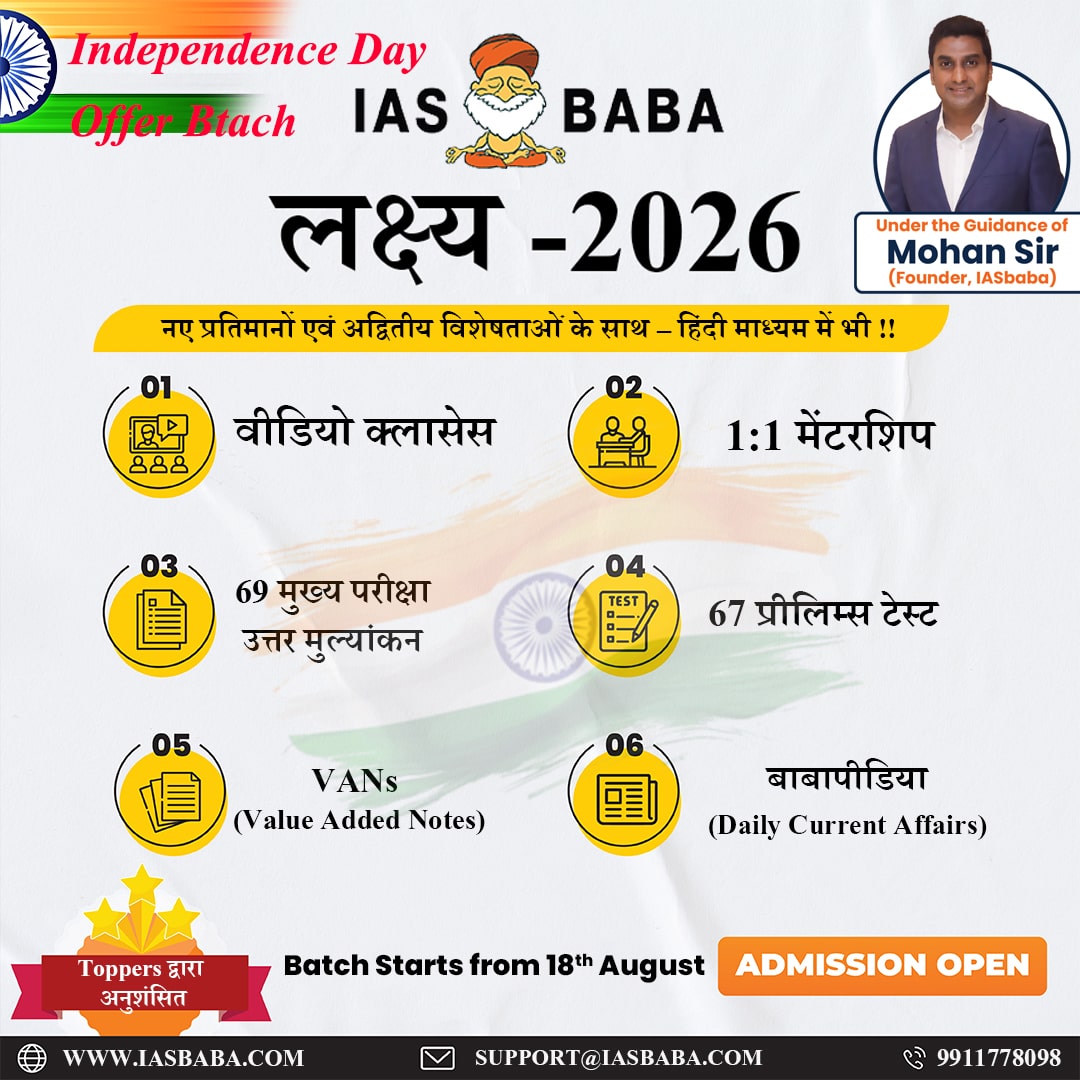Indian History & Post-Independence, TLP-UPSC Mains Answer Writing
Q.3. Differentiate between Nagara and Dravida temple architectures with suitable examples. How did their respective socio-cultural milieus influence their designs? (150 words, 10 marks)
Introduction
By the 6th century CE, Indian temple architecture divided into two main styles: Nagara and Dravida. Each style reflects unique regional traditions and religious values. Historian Adam Hardy calls this the “dynamic interplay of regional traditions and Pan-Indian ideals.”
Body
Differences between Nagara and Dravida Temple Architectures
| Feature | Nagara Style | Dravida Style |
| Superstructure | Curved shikhara (e.g., Kandariya Mahadeva, Khajuraho) | Stepped pyramidal vimana (e.g., Brihadeshwara, Thanjavur) |
| Gateway (Entrance) | Modest or absent (e.g., Sun Temple, Modhera) | Large monumental gopurams (e.g., Meenakshi, Madurai) |
| Water Tank | Rarely included | Sacred tanks central (e.g., Kapaleeshwarar, Chennai) |
| Boundary Wall | Open or minimal walls (e.g., Lakshmana, Khajuraho) | High compound walls (e.g., Srirangam Temple) |
| Temple Layout | Compact, focus on sanctum (e.g., Lingaraja, Bhubaneswar) | Expansive, with multiple halls (e.g., Airavatesvara) |
| Sculptural Emphasis | Horizontal friezes, stories (e.g., Vishvanatha, Khajuraho) | Vertical pilasters, deity statues (e.g., Kailasanatha, Kanchipuram) |
| Subsidiary Shrines | Independent smaller shrines | Integrated sub-shrines (e.g., Chennakesava, Belur) |
Socio-Cultural Milieu
- Religious Traditions: Dravida temples linked to Shaivism, Vaishnavism, and Bhakti; Nagara rooted in Vedic traditions and cosmic symbolism.
- Royal Support: Dravida style thrived under Cholas and Pandyas as symbols of kingship; Nagara style patronized by Guptas and Chandelas to show royal piety. 3. Community Role: Dravida temples were cultural hubs employing artists and priests; Nagara temples mainly spiritual centers.
- Cultural Expression: Dravida temples promoted classical arts and Tamil Bhakti culture; Nagara temples focused on mythological carvings and cosmic themes.
- Language: Dravida inscriptions mostly in Tamil and local languages; Nagara inscriptions mainly in Sanskrit.
- Climate & Geography: Dravida temples with large open spaces fit South India’s monsoon climate; Nagara temples’ compact design suits northern drier regions. 7.
Conclusion
Nagara and Dravida temples are vital to India’s heritage and tourism. Schemes like Adarsh Smarak, Adopt a Heritage Site, and the Ancient Monuments Act 1958 help preserve them, ensuring these temples remain living centers of faith and culture.














